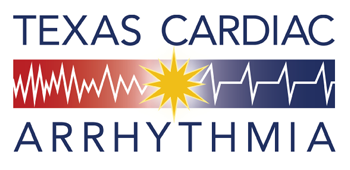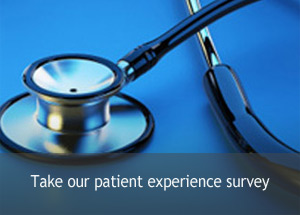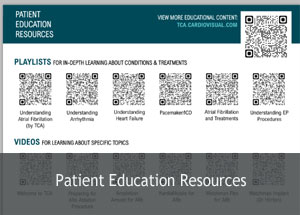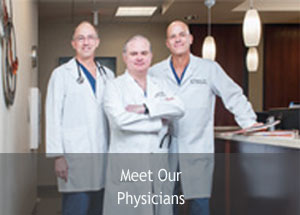Our Procedures
Implantable Cardioverter Defibrillators (ICDs)What Is An ICD?

Smaller than the size of a palm, an ICDpacks a lot of power into a little space. It sends electrical pulses to the heart when rhythms get dangerously out of control, effectively halting racing beats and protecting against Sudden Cardiac Death.
Almost everyone has seen a physician on television, paddles in hand, yelling “Clear!”, then applying those paddles to the chest of a patient to shock him “back to life”.
As dramatic as the scene may be, defibrillation, or shock, can be the only way to stop certain deadly heart arrhythmias before they kill.
For those who are at high risk of the deadliest forms of arrhythmias – ventricular tachycardia and ventricular fibrillation – an internal “shocking” device may provide the best defense against sudden cardiac arrest. Such a device, known as an implantable cardioverter defibrillator (ICD), is considered effective in fighting cardiac arrest over 90 percent of the time, an astounding success for a condition that few survived as recently as 15 years ago.
About ICDs
Implantable cardioverter defibrillators (ICDs) are small devices, about the size of a pager, that are placed below the collarbone. Via wires, or leads, these devices continuously monitor the heart’s rhythm. If the heart beats too quickly, the ventricles will not have enough time to fill with blood and will not effectively pump blood to the rest of the body. Left unchecked, the rapid heartbeat could cause death. To intervene, the ICD issues a lifesaving jolt of electricity to restore the heart’s normal rhythm and prevent sudden cardiac death.
ICDs also can act as pacemakers when a heart beat that is too slow (bradycardia) is detected.
Most ICDs keep a record of the heart’s activity when an abnormal heart rhythm occurs. With this information, the electrophysiologist, a specialist in arrhythmias, can study the heart’s activity and ask about other symptoms that may have occurred. Sometimes the ICD can be programmed to “pace” the heart to restore its natural rhythm and avoid the need for a shock from the ICD. Pacing signals from the ICD are not felt by the patient; shock signals are, and have been described as a kick in the chest.
Sudden Cardiac Death Vs. Heart Attack
Cardiac arrest, or sudden cardiac death (SCD), happens when a heart rhythm disturbance prevents the heart from operating properly and delivering blood to the brain and other vital organs.
A heart attack occurs when a partial or complete vessel blockage interferes with the ability of blood to flow to the heart, and heart muscle dies.
Cardiac arrest, or sudden cardiac death (SCD), is NOT a heart attack, but a prior heart attack can put someone at risk for SCD.
When Is ICD Therapy The Right Choice?
In the simplest terms, anyone who has had or is at a high risk of having ventricular tachycardia, fibrillation or sudden cardiac arrest is a candidate for an ICD.
Many people have both coronary artery disease (the primary cause of heart attacks) and an arrhythmia (a heart rhythm disorder). They are at particular risk for sudden cardiac death and may be candidates for ICDs, even though they have no noticeable symptoms of an abnormal heart rhythm.
- A cardiac arrhythmia specialist should evaluate cardiac patients if they have experienced any of the following: A prior cardiac arrest
- Ventricular tachycardia (VT) which is an episode of rapid heartbeat originating from the lower chambers of the heart
- Ventricular fibrillation (VF), which is similar to VT but is characterized by a heartbeat that is too rapid and is irregular or chaotic
- Ejection fractions of less than 35 to 40 percent. An ejection fraction (EF) is the proportion, or fraction, of blood pumped by the heart with each beat. A normal heart pumps out a little more than half the heart’s volume of blood with each beat, making a normal EF 55 percent or higher
- Patients at a high risk for sudden cardiac death (SCD) because of an inherited heart abnormality
Most Dangerous Rapid Heart Rhythm
Sudden rapid heartbeats originating in the ventricles are the most dangerous arrhythmias. Ventricular tachycardia, a rapid yet steady beat is dangerous in its own right. It can turn into ventricular fibrillation or VF, which is characterized by irregular and chaotic rapid heartbeats. Because the fibrillating heart muscle cannot contract and pump blood to the brain and vital organs, VF is the number one cause of sudden cardiac death. Without immediate emergency treatment of an electric shock to restore normal rhythm, an individual loses consciousness within seconds and dies within minutes.
Common Questions About ICDs
What Is An ICD?
ICDs are pacemaker-like devices that continuously monitor the heart rhythm, and deliver life-saving shocks if a dangerous heart rhythm is detected. They can significantly improve survival in certain groups of patients with heart failure who are at high risk of ventricular fibrillation (VF).
Modern ICD devices have an electronic memory that records the electrical patterns of the heart whenever an abnormal heart beat, or arrhythmia occurs. This record is available for review during regular checkups by the physician, who can monitor the frequency and severity of problems in the heart’s electrical conduction system that may lead to cardiac arrest or other serious heart disorders.
Can An ICD Prevent A Heart Attack?
No! An ICD cannot prevent a heart attack, which is different from sudden cardiac arrest. A heart attack, or myocardial infarction (MI), is a “plumbing problem” caused by clogged or blocked blood vessels that reduce or block the normal supply of oxygen-rich blood to the heart. Without oxygen, heart muscle dies. An area of dead muscle is called an “infarct.” Although a heart attack and SCD are separate conditions, they are related. Often, the damage done by a prior heart attack is an underlying cause of SCD.
SCD is the result of an “electrical problem” in the conduction system that regulates the normal, rhythmic contractions of the heart muscle that pumps blood throughout the body. In SCD, the electrical signals that regulate the pumping action of the lower chambers of the heart (ventricles) suddenly and without warning become rapid and chaotic. When the rhythmic contractions of the ventricles stop, the heart can’t pump blood. The brain is starved of oxygen, and the individual loses consciousness in seconds. The heart cannot recover on its own from VF. Unless immediate emergency help is available, death follows in minutes.
How Does An ICD Differ From A Pacemaker?
Both an ICD and a pacemaker are devices that are implanted under the skin and connected to wires, or leads, that are placed in the heart. Both continuously monitor the heart to detect changes in its natural rhythm. A pacemaker, however, is used to detect a too-slow heart rate (bradycardia). When it senses that the rhythm is too slow, it sends an electrical signal to stimulate (pace) the heart so it continues its normal electrical beat. The electrical signal that is sent from the pacemaker is strong enough to stimulate the heart to beat, but not strong enough for the patient to feel. An ICD, on the other hand, detects a too-rapid or chaotic heartbeat and delivers a stronger electrical shock to restore the heart to its natural beat. Some ICDs also act as pacemakers.
How Can An ICD Help A Patient Who Has Suffered A Heart Attack?
The damage done by a heart attack, or MI, can affect the heart’s electrical system and its ability to pump blood effectively. The damaged heart muscle that results from a heart attack may give rise to abnormal electrical signals that sometimes cause deadly heart rhythms, which the ICD detects and corrects.
The most common underlying problem seen in victims of SCD is coronary artery disease. This is a condition in which the arteries that supply blood to the heart are narrowed or blocked, usually due to arteriosclerosis (sometimes called “hardening of the arteries”). In this disease, a fatty substance called “plaque” builds up in the blood vessels, and can affect the normal flow of blood to the heart and other parts of the body.
Can I Use A Microwave Oven Or Other Appliances If I Have An ICD?
Yes, normal household appliances and wood working tools will not cause interference. You should avoid strong magnetic fields and large magnets, antennas, arc welders, and industrial equipment. If you work near industrial equipment, discuss your specific situation with your physician or nurse.
Can I Use A Cellular Phone?
Yes, with these general guidelines:
- Hold the phone to the ear on the side of the body opposite of the implanted device.
- Do not carry the phone in the ON position in a breast pocket over or within 6 inches of the ICD.
- Maintain a minimum of 6 inches between the ICD and the phone.
Are Security Systems And Airports A Problem?
Walk normally through theft detector systems. Carry your ID card with you at all times. Show the airport security people the card, and ask to be hand searched.
Can An ICD Patient Drive A Car?
Many physicians recommend no driving for 6 months after implantation of an ICD, or after a shock. Discuss this issue with your physician to maintain your safety as well as that of others.
What Do I Do When I Receive A Shock?
If one shock occurs and recovery is immediate, a call to the device clinic may be reassuring for the patient as well as the family. However, if one or more than one shock occur without rapid recovery, 911 emergency services should be called. If CPR and other lifesaving activities are needed, they should be started immediately.
How Does It Feel?
Fast pacing therapy may feel like a flutter or palpitation in the chest, or nothing at all. The shocks may feel like a sudden painful kick in the chest. It occurs in an instant and then is gone. If a blackout occurs, the shock may not be felt. Someone touching the patient may feel a small muscle jerk. It will not harm them.
How And When Is The Battery Replaced?
The battery check at each visit will determine when the ICD should be replaced. The electronic circuitry as well as the battery are sealed inside the ICD. When replacement time arrives the lead(s) will be tested and then a new ICD is attached to the lead(s). Usually the original lead(s) are reused.
How Effective Are ICDs?
Studies of ICDs show they are 99 percent effective in detecting and stopping deadly heart rhythm disorders. In clinical trials, ICDs have been shown to be the most successful therapy to prevent sudden cardiac death in certain groups of high-risk patients.
Who Is A Candidate For An ICD?
The American College of Cardiology and the American Heart Association, along with representatives of the Heart Rhythm Society, have developed guidelines to help physicians and patients decide whether an ICD is the best treatment for an individual at risk for SCD. For example, it is agreed that ICD therapy is of benefit for:
Secondary Prevention. This includes individuals who have suffered a prior cardiac arrest or who experience spontaneous, sustained episodes of ventricular tachycardia (VT) that is not self-correcting), especially if they also have episodes of unexplained fainting. VT is a too-rapid heartbeat that can lead to VF.
Primary Prevention. This is treatment for patients who have never experienced the deadly heart rhythm disorders that lead to SCD, but have significant risk factors for the conditions. This includes certain patients with an ejection fraction of less than 35-40 percent and documented episodes of VT that are self-correcting and cause no adverse symptoms, but in whom sustained VT can be induced during the electrophysiology study. Ejection fraction is a measure of the amount of blood pumped out of the heart with each beat. An ejection fraction below 55 is considered abnormal. Vice President Cheney’s ICD is for primary prevention.
How Can People Find Out If They Are At Risk For SCD?
There are a number of tests that will help determine if heart attack survivors and people with other conditions that may put them at risk for SCD will benefit from ICD therapy. These include:
- Echocardiogram. The first test performed is usually an echocardiogram, which will determine whether the heart’s pumping function is impaired. In this painless, noninvasive test, a device called a transducer is placed on the chest and sound waves are bounced off the heart. This provides a moving picture of the heart.
- A Holter monitor is an external device worn by an individual who may be at risk for heart rhythm disorders. The monitor automatically records a continuous electrocardiogram (ECG) of the heart’s electrical activity; it usually is worn for 24 to 48 hours.
- An event recorder is a small, pager-sized device that also records the electrical activity of the heart. Unlike a Holter monitor, it does not operate continuously, but instead is activated by the individual whenever he or she feels the heart begin to beat too fast or chaotically. After the device is activated to record the heart rhythm, the patient can report the event and transmit the recording by phone to a doctor or other health care provider.
- An electrophysiology study (EPS) is a test that can predict if an individual is at high risk for SCD. In this study, electrical signals are administered to the heart muscle through a thin tube called a pacing catheter to see if they will stimulate ventricular tachycardia, the too-rapid heart rate that often leads to VF and SCD. The test is performed in a safe and controlled electrophysiology laboratory at a hospital or clinic and the patient is in no danger.
In an EP study, local anesthetics are used to numb areas in the groin or near the neck, and small tubes called catheters are passed into the heart to record its electrical signals. During the test, the physician studies the speed and flow of electrical signals through the heart, identifies rhythm problems and pinpoints areas in the heart’s muscle that give rise to abnormal electrical signals. An electrophysiology study can:
- Identify which patients who have had a prior heart attack, or MI, are at risk for serious heart rhythm disturbances and, perhaps, SCD.
- Help determine which patients may require aggressive treatment to prevent SCD.
- Identify individuals whose hearts cannot be induced into dangerous arrhythmias. They appear at lower risk for developing rhythm disorders that can lead to SCD.
How Common Is SCD?
SCD is a leading cause of death in adults in the U.S. and affects approximately 300,000 adults each year. Controlling the abnormal heart rhythm that leads to most cases of SCD might significantly reduce death from heart diseases. About half of all deaths from heart disease are sudden and unexpected, regardless of the underlying cause. This includes 50 percent of all deaths due to arteriosclerosis (clogged blood vessels – a condition sometimes called “hardening of the arteries”) as well as 50 percent of deaths due to degeneration of the heart muscle, or to enlargement of the heart in patients with congestive heart failure.
SCD is particularly devastating because of its unexpectedness. Although studies have shown that most victims have underlying disease, many victims of SCD are outwardly healthy, active individuals who do not know they are at risk. Although economic studies have not yet been done and the direct medical costs are less than for lingering illnesses, the economic and social impacts of SCD are huge. Sudden cardiac death claims many people during their most productive years and devastates unprepared families.
Can Patients Without An ICD Survive The Cardiac Arrest That Causes SCD?
Cardiac arrest is reversible in most victims if it’s treated within a few minutes with a defibrillator, an electrical device that shocks the heart back into normal rhythm. In as many as 95 percent of cases, however, patients die before emergency help can reach them. This number can be reduced by the recent development of small automated external defibrillators (AEDs) that are easy to use, portable and relatively inexpensive. The Heart Rhythm Society, the American Heart Association and other organizations advocate the widespread availability of these devices on airplanes and in public buildings. Studies in which police cars are equipped with AEDs have shown a reduction in the number of deaths from SCD in certain communities.
Is ICD Therapy The Only Treatment For SCD?
A number of treatments have been investigated to help people at risk for SCD. These include:
- Medications. ACE inhibitors, beta blockers, channel blockers and other medications are prescribed to control abnormal heart rhythms or treat other conditions that may contribute to heart disease or SCD. There have been many clinical trials and other studies of medications currently available to prevent cardiac arrest. Medications often are helpful in treating other symptoms of cardiovascular disease. Sometimes, more than one medication is prescribed at the same time. These medications also often are prescribed for patients who have an ICD. The results of drug therapy alone have been disappointing. In some cases, certain medications have actually increased patients’ risk of SCD. ICD implantation remains the most effective way to prevent SCD in high-risk patients.
- Radiofrequency Catheter Ablation (RFA). In this technique, radiofrequency energy is used to destroy small areas of heart muscle that give rise to the abnormal electrical signals that cause rapid or irregular heart rhythms. RFA often is used in conjunction with ICD therapy to decrease the frequency of abnormal heart rhythms in the ventricles. It is not a substitute for an ICD.




